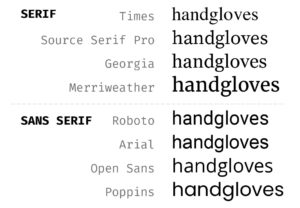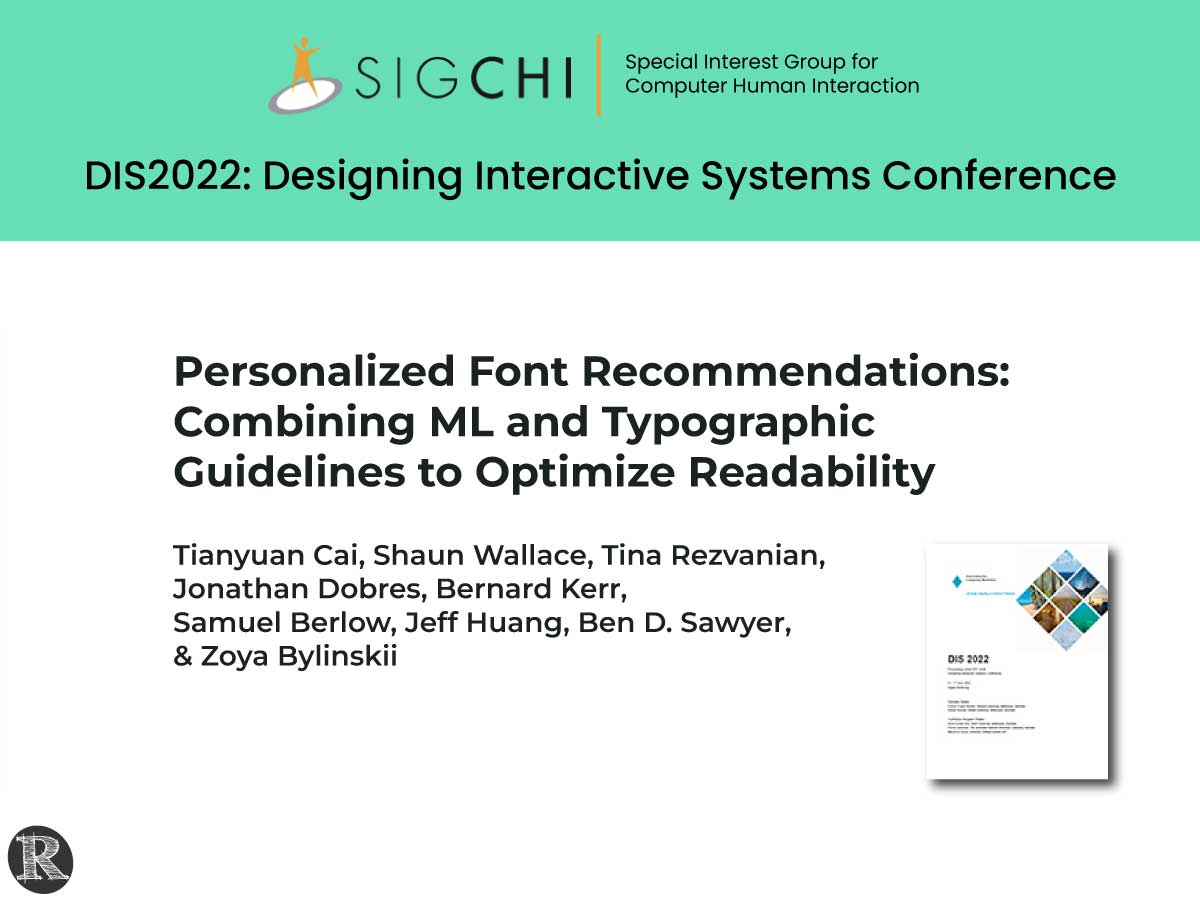Vision Scientists, Data Scientists, and Typographers Collaborate on New Readability Solutions
At the proceedings of DIS’22, the ACM SIGCHI Conference on Designing Interactive Systems (DIS), Tianyuan Cai and his colleagues presented their latest research, Personalized Font Recommendations: Combining ML and Typographic Guidelines to Optimize Readability. The study is a collaboration between vision scientists, data scientists, and typographers.
Growing evidence suggests that personalizing reading formats can significantly impact reading performance beyond font size manipulations. Cai et al. cite recent research showing that “with the right font, individuals could potentially read 25% faster” (Wallace et al., 2022), and readers are often unable to select their fastest reading font based on their preference alone.
The team investigated the effectiveness of machine learning in selecting a font to increase a participant’s reading speed and font characteristics that are predictive of individual reading speeds.

Illustration of font selections in the same nominal size. (Cai et al., 2022)
The study of readability lies at the intersection of science and design. Interviewing five renowned typographers, the team selected eight fonts for a remote readability study of 252 paid crowd worker participants, ages 18 to 71.
And then they built “FontMART,” a Personal Recommender for Faster Fonts. FontMART is a derivative of LambdaMART[1] that provides a new type of prediction–which fonts are most likely to improve the reading speed of individual readers for general body text.
The results of their Machine Learning model predicted fonts that help individuals read approximately 23 WPM faster than a randomly chosen font and 159 WPM faster than their slowest font. The model successfully related reader characteristics to font characteristics.
Implications for Readability
Growing evidence from cross-disciplinary readability researchers shows that personalizing reading formats can significantly impact reading performance. (See highlighted research and The Readability Consortium to learn more.) With more and more reading occurring on digital devices and over 800,000+ digital fonts, determining an individual’s personalized reading format is a huge challenge.
Readers need to be matched to their unique personalized reading formats just like an eye doctor might prescribe reading glasses unique to an individual. Tianyuan and his colleagues created an effective Machine Learning model to recommend faster fonts for specific readers.
This work points to a future where it will be possible to recommend a better font for readers; text personalization algorithms will be used to create better reading experiences. Technology and publishing companies can use these insights and the forthcoming algorithms as they implement personalized reading format solutions, making each reader the best reader they can be.
[1] LambdaMART is one of the Learning to Rank (LTR) algorithms developed by Chris Burges and his colleagues at Microsoft Research.
Personalized Font Recommendations: Combining ML and Typographic Guidelines to Optimize Readability
Tianyuan Cai, Shaun Wallace, Tina Rezvanian, Jonathan Dobres, Bernard Kerr, Samuel Berlow, Jeff Huang, Ben D. Sawyer, and Zoya Bylinskii
Abstract
The amount of text people need to read and understand grows daily. Software defaults, designers, or publishers often choose the fonts people read in. However, matching individuals with a faster font could help them cope with information overload. We collaborated with typographers to (1) select eight fonts designed for digital reading to systematically compare their effectiveness and to (2) understand how font and reader characteristics affect reading speed. We collected font preferences, reading speeds, and characteristics from 252 crowdsourced participants in a remote readability study. We use font and reader characteristics to train FontMART, a learning to rank model that automatically orders a set of eight fonts per participant by predicted reading speed. FontMART’s fastest font prediction shows an average increase of 14–25 WPM compared to other font defaults, without hindering comprehension. This encouraging evidence provides motivation for adding our personalized font recommendation to future interactive systems.
Access the published paper from ACM Conference DIS’22 Proceedings here.
Cai, T., Wallace, S., Rezvanian, T., Dobres, J., Kerr, B., Berlow, S., Huang, J., Sawyer, B. D., & Bylinskii, Z. (2022). Personalized Font Recommendations: Combining ML and Typographic Guidelines to Optimize Readability. Designing Interactive Systems Conference, 1–25. https://doi.org/10.1145/3532106.3533457
Learn More
Video Preview, DIS’22: ACM SIGCHI Conference on Designing Interactive Systems
Speaker: Tianyuan Cai, Machine Learning Engineer, Adobe
Lightning Talk
Building Better Reading, Skoll World Forum 2022
Speaker: Tianyuan Cai, Machine Learning Engineer, Adobe
Read More
Adobe Research Blog: Letting machine learning choose the right font for everyone written by study co-author, Dr. Zoya Bylinskii, Research Scientist, Adobe.




